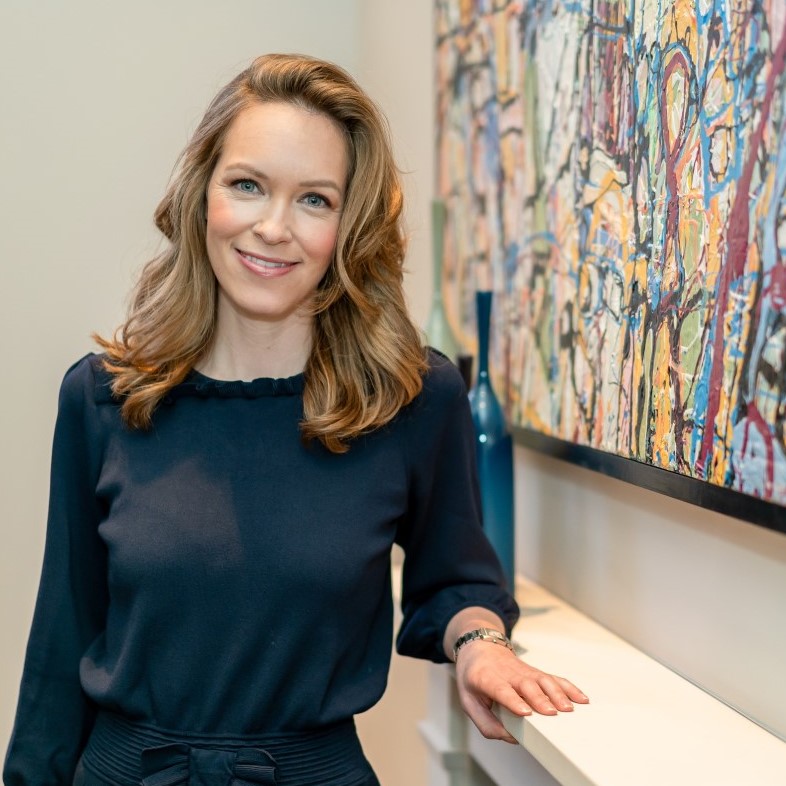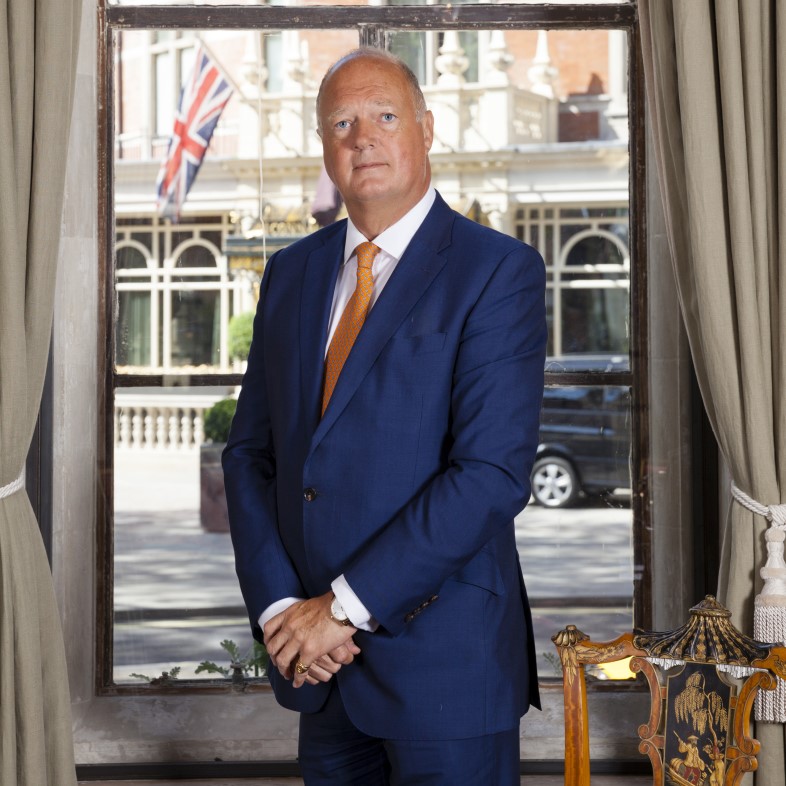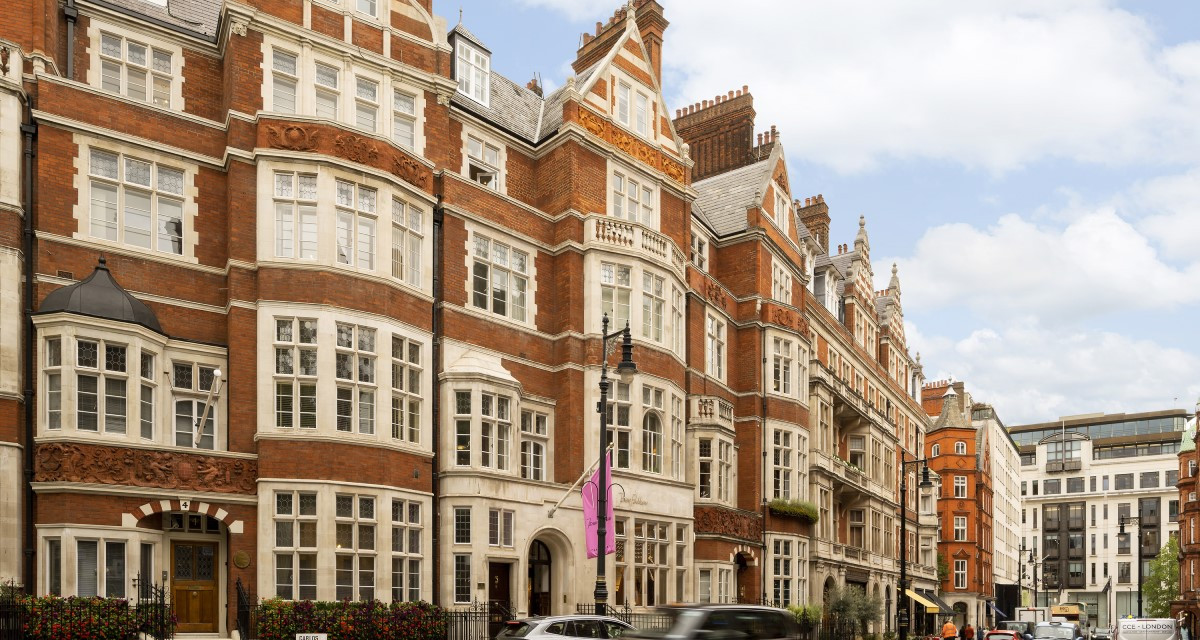Will the central London property market resurgence continue? We speak to local property gurus to forecast the year ahead
Words: Will Moffitt
Today people are going out, looking at properties and buying them,” Gary Hersham (pictured right), founder of Beauchamp Estates, tells me matter-of-factly; listing five recent property transactions in central London that together totalled £130 million. Even for a man who has been dubbed “Britain’s most successful estate agent”, that’s not a bad month’s work.
These lucrative sums speak to a central London market that, particularly in the super-prime sector, has been revitalised from a pandemic-induced slumber. In this section of the capital, 272 homes have sold for £5 million or more; up two thirds from the same stage in 2019, according to data and property information platform LonRes.
Unsurprisingly, given its well established reputation as one of London’s most affluent and vibrant locations, Mayfair has been a crucial part of this prime property resurgence alongside Kensington and Chelsea.

There are myriad drivers behind this recovery. Successful vaccine campaigns and the opening up of society in the wake of the pandemic have inevitably spurred investment, and those buyers looking to purchase new homes before lockdowns have returned to the property ladder. As Hersham says: “The two major problems during the pandemic were that people couldn’t view properties and the fear that they weren’t being offered the right price for them”.
Alongside this sudden explosion of pent-up demand are more recent short-term factors that have influenced trade from overseas. The pound’s weakness against the dollar – at one stage sterling sank to a low not seen since 1985 – has increased the proportion of super-prime sales to buyers from the Middle East, North America and greater China, according to agents. How pivotal this has been in terms of sales of super-prime properties is up for debate.

“Central London has always been propped up by international money, but the weak pound has really spurred a lot of people on who have toyed with the idea of owning a home in London,” says Claire Reynolds (pictured left), head of Savills Mayfair and co-head of prime central London. “A lot of people think that now is such a perfect time, because the discounts are so significant, and we don’t know how long that will last.”
Hersham thinks that the “dollar incentive” may have passed since the pound has recovered from its record plummet and that American interest is primarily driven by long-term investment strategies rather than short-term wins.
“I think there are a lot of Americans investing in London because they see value and they see growth in London, and they see safety in London”, he says. “If the dollar is in their favour when they buy it, so much the better.”
Alongside the predictable boom in sales of office space that piqued as the working from home trend declined, serviced apartments have been a significant growth area in the residential sector.
This clamour for apartments with hotel-style facilities, including concierge teams and gyms, is only likely to continue in 2023. Savills says there are 640 such schemes worldwide and that this number will increase to 1,100 by 2027.
“People realise that if they’re going to be in a mansion, or an older building, they’re going to be paying fairly colossal service charges,” says Simon Barry (pictured right), head of new developments at Harrods Estates. “So they’d rather be paying colossal service charges and get a pool or a gym too.”
Rising energy costs may impact these types of residential properties, although quite how severely is difficult to predict. “The only cloud on the horizon is inflation, because service charges are going to go up,” says Peter Wetherell, founder and chairman of Mayfair based Wetherell Estate Agents.
“[With serviced apartments] you’ve got to heat these buildings, you’ve got to provide 24-hour porter service. So you’re going to have to keep those costs under control.”


Rising energy costs may impact these types of residential properties, although quite how severely is difficult to predict. “The only cloud on the horizon is inflation, because service charges are going to go up,” says Peter Wetherell (pictured left), founder and chairman of Mayfair based Wetherell Estate Agents.
“[With serviced apartments] you’ve got to heat these buildings, you’ve got to provide 24-hour porter service. So you’re going to have to keep those costs under control.”
Wetherell remains buoyant about the superprime property market in 2023, predicting a year of outstanding sales in and around Mayfair. “The headlines will be about Mayfair, once again, being the most expensive area of London,” he forecasts. “All the big money at the moment has been going into Mayfair. My prediction is that you are going to be reading about it a lot.”
For Barry, London’s well established reputation as a sensible place for investment, particularly in the super-prime sector, is unlikely to wane. “Obviously, financial turmoil causes uncertainty, [but] London is still perceived as a relatively safe and secure investment,” he says. “When you look across the whole globe, the breadth of demand is probably unparalleled. It’s not just one particular demographic. It really is everywhere from China to the States to the Far East and the Middle East. The only people who are no longer investing in London are the Russians, and they were a waning force.”
Reynolds remains equally optimistic, citing the secondhand market as a key area of growth with a scarcity of new properties driving that demand, and cites the sale of a secondhand property on Carlos Place – which totalled the highest pound for square foot sale in Mayfair since 2019 – as an example of the demand for previously owned properties.
“I think we’ll have a micro market in 2023 where lots of people want to buy in Mayfair, and they’re just choosing their time carefully,” she says. “There’s definitely pent-up demand still there. And there’s definitely people circling in the market.
“I’ve been working in the area for 13 years and for me Mayfair has never been better,” Reynolds adds, citing the redevelopment of the American embassy into Chancery Rosewood, a 139-room luxury hotel and retail site in Grosvenor Square, the ambitious Grosvenor Square redesign and South Molton Street triangle developments as examples of Mayfair’s ever evolving property portfolio.
Then there’s 1 Mayfair. Developed by billionaire Mayfair resident John Caudwell and designed by world renowned architect Robert AM Stern, the stone-clad, Palladian block will replace a parking garage and a filling station. Priced at £2 billion, it is expected to be London’s most expensive ever residential building.
“When you’ve got a major landlord like Grosvenor who have a vested interest in preserving and enhancing the area, it’s a really safe investment because they have the ability to shape the neighbourhood,” Reynolds says. “For me that’s a massive attraction.”
“I can’t see anything but positivity,” Hersham concurs. “But then again, that’s my modus operandi. Maybe I’m exaggerating things a bit in my own mind’s eye. But in the super-prime area I see a very good year ahead.”








